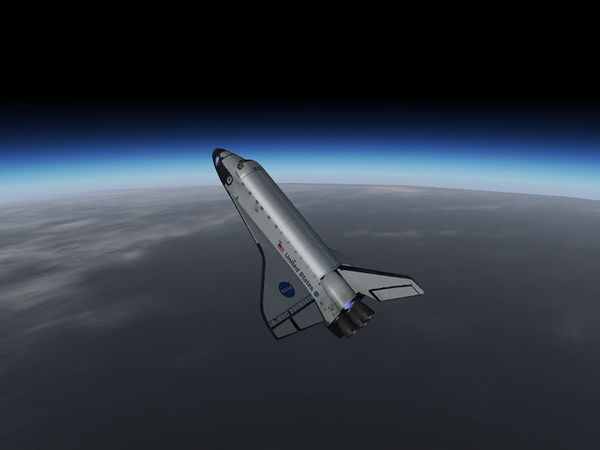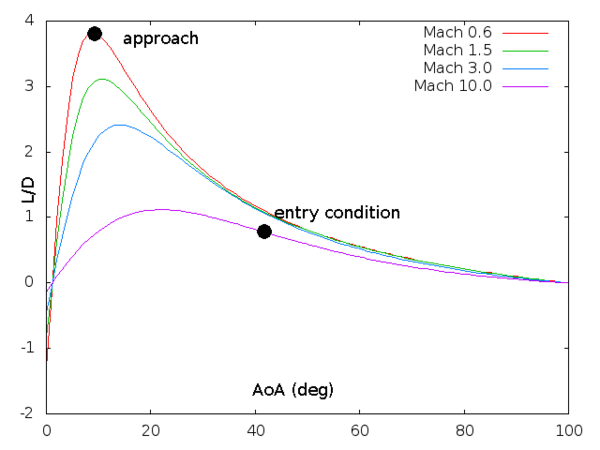Flying the Shuttle - Entry
| Note This article refers to the Space Shuttle in the FGAddon repository. |
This mission phase can directly be started using --aircraft=SpaceShuttle-entry on the command line.
What are we trying to do?
The entry phase of a Shuttle mission lasts from the so-called entry interface at about 400.000 ft to the terminal area energy management (TAEM) interface at 85.000 ft. During that time, the Shuttle decelerates from orbital speed (Mach 26) to supersonic speed (Mach 2.5) and changes from a ballistic flight trajectory to an aerodynamical glide. The deceleration is provided by atmospheric friction which converts the tremendous energy of the propellant burned during launch and used to reach orbit into heat. The goals during entry are hence (in decreasing order of importance):
- manage the heat load such as to prevent destruction of the orbiter
- manage the deceleration rate such as to prevent destruction of the orbiter and TAEM interface is reached close to the landing site
- manage the ground track such that it points towards the landing site
Some theory
The total energy in the friction heat is sufficient to destroy the orbiter (as the Columbia disaster has demonstrated). It is therefore mandatory that most of the energy never reaches the orbiter. This is accomplished by a blunt-body entry - for a streamlined hypersonic body, the shockwave of compressed air is attached to the surface, but for a blunt body it detatches, containing most of the energy, and only a small fraction of a few percent are radiated to the actual spacecraft structure. This remaining heat flow still leads to temperatures close to 3000 F at the nose and leading wing edges, but can be managed by the thermal protection system.
It is hence mandatory that the airstream during an entry never reaches the weakly protected upper fuselage and that the shockwave remains always detatched from the orbiter.
This is accomplished by maintaining a high AoA, i.e. during the hot entry phase, the Shuttle is flown in what is technically close to a stall condition - pitched up at 40 degrees.
As the lift/drag curves of the Shuttle show, at hypersonic speeds, even in that regime, the glide ratio is still about 0.8, so the shuttle will produce lift even at such high AoA.
The density of the ambient atmosphere largely sets the deceleration force and thermal load, and the altitude determines the atmosphere density, hence to manage the deceleration force and thermal load, the vertical speed needs to be controlled. As soon as the transition to aerodynamical flight is made, aerodynamical lift provides the means to do so.

